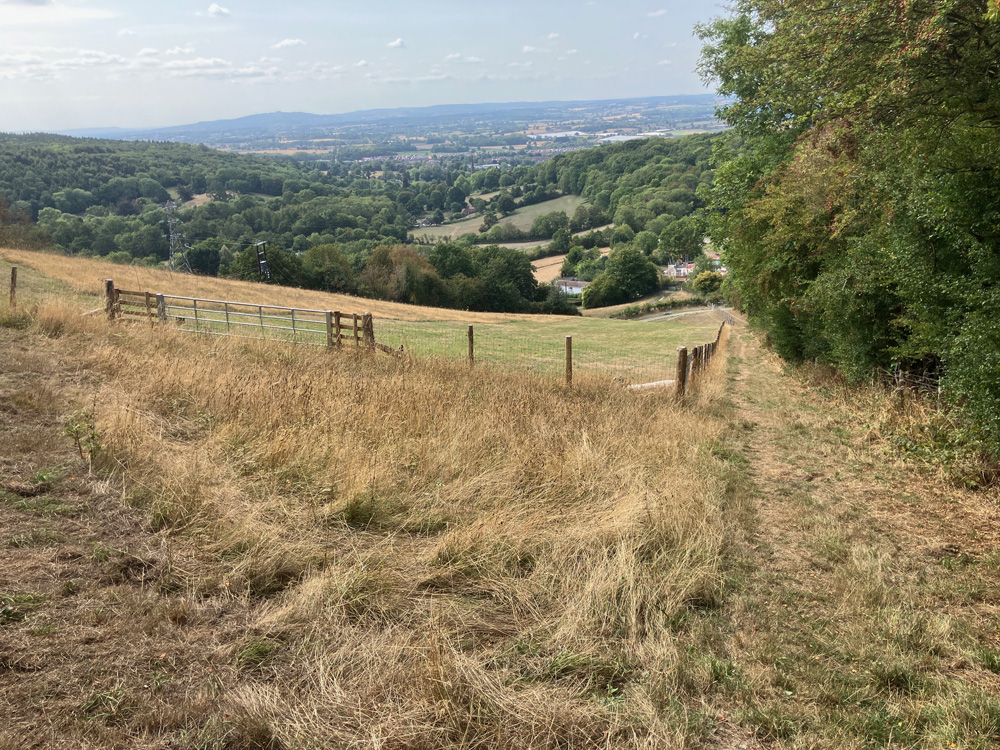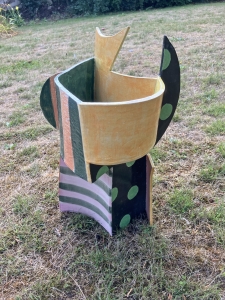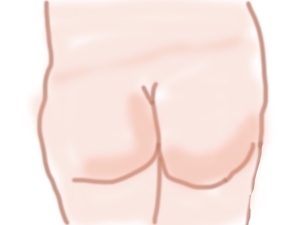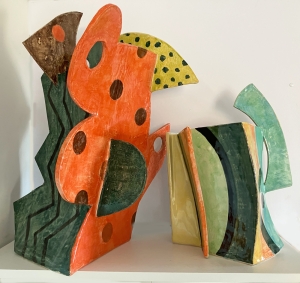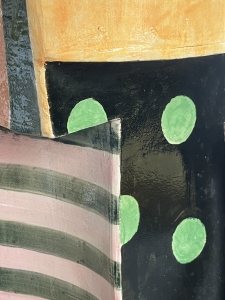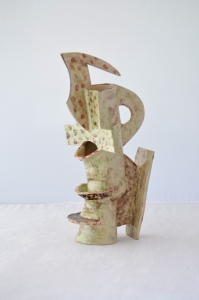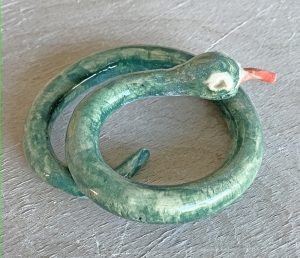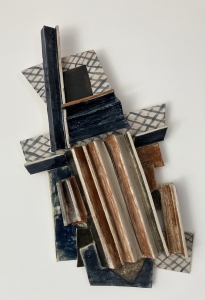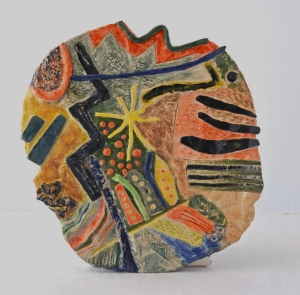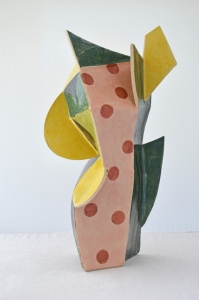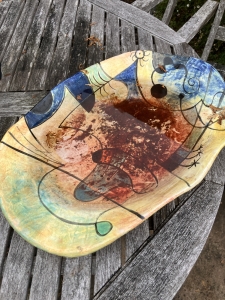Nude slab-rolling?
It is pouring with rain today. It’s pelting down, almost showing off, as if to make up for the incredibly dry months we’ve had. You can tell from the usual image of the view of Ledbury from Bradlow Knoll that it’s been a long dry summer here in the UK. The consequences of the lack of rain this year include declared droughts in some areas, agriculture with poor crop quality and reduced grass growth and environmental stress on rivers with low flows. It’s also meant a hot studio and the need to wear as few articles of clothing as possible without getting arrested for indecency.
This has led Peter Arscott Ceramics (PAC) to consider establishing the first, and possibly only, nudist ceramic workshops in the country. “Surely”, says Spiro, “there’s a market for it? You Brits, unlike us Greeks, like to expose as much of yourselves as possible the moment the sun makes an appearance. And think of the marketing opportunities…we could call ourselves The Naked Potter” However, after proper consideration it was deemed a Health & Safety issue. It’s OK for Spiro, he’s a figment of our imagination, but for us humans? Just think of the dangers to exposed parts anywhere near a red-hot kiln, or something getting stuck in the slab roller in a moment of forgetfulness or crouching too low near the pugmill. Anyway, there already is a Naked Potter who paints bottoms onto his dishes (butt plates).
After some research, Naked Pottery turns out to be a unique art form that utilises raw, earthy clay. The term “naked” refers to the artist’s openness and vulnerability as they create, connecting deeply with the material and their creative process. The finished pieces have a distinctive organic and often flawed appearance, as the clay is fired unglazed. Sadly, potters, both historical and contemporary, seem to have worn normal clothing while working with clay.
But at PAC we too connect deeply with our creative process. And as has been mentioned in previous blogs, conveying a particular emotion in an abstract ceramic piece is possible, so long as there is not too much nuance intended. Anger, excitement, horror, joy, surprise, disgust – yes, both positive and negative emotions are conveyable. Given that most people buy ceramics to take home and enhance their domestic environment, the brighter and more joyful pieces are always going to be first in the queue. “Darling, I’ve just bought this vase for the living room. It conveys a sense of shame and repugnance which I find intriguing” is hardly a winner.
When a piece is made because the maker wants to get something across which he or she believes is more important that its actual practical use, then we are straying into the realms of art, of sculpture. PAC usually strives to achieve a fine balance between functionality (vase) and art (shape, colour, size).
However, sometimes a prevailing mood can tug the hands in one direction only. In fact, the piece above (Supplicant piece) is not at all functional – unlike the Naked Potter’s pieces it has no bottom, so cannot be a vase. Isn’t it miserable? It’s begging for something, I think forgiveness, and is entirely lacking in joyfulness or delight. Only its Mum would love it.
It’s probably true that artisans know exactly what they want to do and know how they are going to do it. At PAC we don’t know exactly what we are going to do. We know vaguely how to get there, but we don’t know which choices we are going to make. For example, we might decide to make a vase with raised arms, but until we cut the slabbed clay into the shapes, we have no idea exactly what those arms will look like. Too much pre-planning removes the element of surprise that keeps a piece fresh. Every piece is singular.
At other times, the desire to try something different takes over, when emotions are absent and all the hands want to do is to create something atypical: an architectural construct whose height and width will only just fit inside the kiln, a wall piece, a copy of Picasso’s violin, or a snake. This is the thing about clay: it’s a wondrous material which lends itself to so many interpretations that you can get carried away.
Carried away? Yes and no. For some time, the idea of making a twelve-foot-long ladder out of … wait for it … porcelain, yes, porcelain, has been brewing in our heads*. The Porcelain Ladder ©. A technical challenge without a doubt, but possible. And what a metaphor that would be. Imagine the resulting piece up against a wall in the Tate Gallery: functionality sabotaged by its own matter, the most sublime and delicate type of clay. Or how about a porcelain bridge over the Thames? Who would dare walk across it? Do you see where we can go with this concept? Porcelain sledgehammer? Stoneware flagpole? Fine china knuckle dusters? Ceramic combat helmets? (“Yes, that’s quite enough. The heat’s obviously got to you” says Spiro)
It hasn’t stopped raining and the grass is already turning from dull brown to a hint of green. The various ceramic birdbaths in the garden are full and have all got a red sediment at the bottom. This, it turns out, is due to a red algae, Haematococcus pluvial, which thrives in sunlight and produces the red pigment called astaxanthin to protect itself from UV radiation. Who’d have thought – there I was blaming the dirty wood pigeons. Our wood pigeons, however unhygienic, are true art connoisseurs and prefer to scrub their armpits in the Joan Mirò bath, as pictured below with its sediment.
Ladder joke: Fred and Dave, two engineers, are puzzled and scratching their heads next to a flagpole. A girl on a bike stops and asks what’s wrong. “We have to work out the height of the flagpole, but we don’t have a ladder,” says Fred. The girl gets a wrench out of her bike saddlebag and loosens the bolts, then lays the pole flat on the ground. Next, she gets a measuring tape out. “15 metres,” she says, and rides away. “Typical woman”, says Dave. “we ask for the height and she gives us the length.”
- We’re hoping one of you will challenge us and prove that it’s an idea long ago made into an art piece and exhibited at a gallery.
